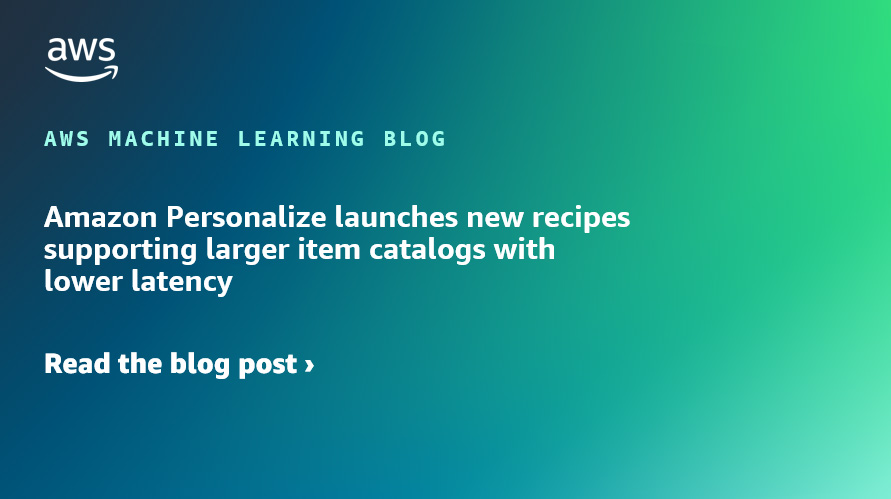
Elevate User Experience with Amazon Personalize
To engage today’s dynamic users, personalized customer experiences are in high demand. However, it’s often difficult and time-consuming to deliver truly personalized experiences that adapt to changes in user behavior. Look no further than Amazon Personalize, a user-friendly machine learning (ML) powered tool, which highly resembles the technology used by Amazon itself. Regardless of your level of familiarity with ML, you can utilize this tool to personalize various aspects, from your website, app, emails and much more.
Amazon Personalize’s Predefined Recipes
One unique feature of Amazon Personalize is the use of recipes—algorithms customized for specific use cases. These recipes empower users to deliver a vast range of personalization, such as tailored content or product recommendations and personalized ranking.
Recently, Amazon Personalize has introduced two advanced recipes, namely User-Personalization-v2 and Personalized-Ranking-v2 (v2 recipes). These innovations are built upon the progressive Transformers architecture to support larger item catalogs with lower latency.
Benefits of New Recipes in Amazon Personalize
These novel recipes provide improvements in scalability, latency, model performance, and functionality, improving user experience and efficiency for your customers:
- Enhanced scalability: These new recipes support training with up to 5 million item catalogs and 3 billion interactions, enabling personalization for large catalogs and platforms with billions of usage events.
- Lower latency: The improved recipes provide lower inference latency and faster training times for large datasets, reducing the delay for your end-users.
- Performance optimization: Tests reveal that the v2 recipes improved recommendation accuracy by up to 9%, and recommendation coverage by up to 1.8x compared to previous versions.
- Return item metadata in inference responses: The new recipes enable the return of item metadata for free, allowing you to incorporate features like genres, descriptions, and availability in inference responses.
- Highly automated operations: The new recipes are designed to reduce the time and effort required for model training typically required.
Deploying New v2 Recipes
In order to use the User-Personalization-v2 and Personalized-Ranking-v2 recipes, you first need to setup Amazon Personalize resources. You must create your dataset group, import your data, train a solution version, and deploy a campaign. For detailed instructions, you can visit the Getting started page.
Implementing User-Personalization-v2 Recipe
A simple way to get started with the User-Personalization-v2 recipe is by preparing your dataset and creating an interactions dataset using a schema. After importing the interactions data, you can fully analyze your information before starting the training process.
Amazon Personalize performs data analysis, showing statistics about your data and recommended actions to meet training requirements and improve recommendations. After setting up your training configuration and solution version, your User-Personalization-v2 campaign should be ready to go.
Cleanup and Conclusion
After following these processes, it’s important to clean up any unused resources created in your account like campaigns, datasets, and dataset groups.This can be done through Amazon Personalize console or using Python SDK.
The advancements in Amazon Personalize’s User-Personalization-v2 and Personalized-Ranking-v2 recipes bring personalization to a higher level, supporting larger item catalogs, reducing latency, and optimizing performance. For more details on Amazon Personalize, check out the Amazon Personalize Developer Guide.
